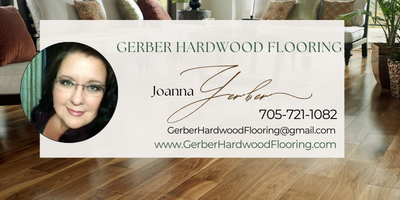Bamboo Floor Refinishing
Bamboo Floor Refinishing
And Why We Choose Not to Provide Bamboo Floor Refinishing
Bamboo floor refinishing is one of the most dangerous processes a floor refinishing professional can undertake. I bet you never considered why.
It has to do with the few facts about the production process of this type of flooring and where it is being produced. As you may know, the Bamboo flooring is considered to be one of the most environmentally friendly, among the array of man-made products available on the market today. Bamboo plants can grow as much a 10cm in the span of 24 hours. This truly is remarkable and many people would choose this specific type of flooring for this very reason - environmental sustainability of the raw materials used to produce it.

We all have seen a Bamboo plant, in one way or another, we are all familiar with what it looks like. A sturdy round tube, made out of fibers. So how do you get from the raw Bamboo fibers to beautiful Bamboo flooring?
You guest it... GLUE.
You need glue to create this type of flooring, and lots of it.
Now, we could assume that the glue used in the production of the Bamboo flooring should be "environmentally friendly" too, right? After all this type of flooring is considered the most environmentally conscious.
This is where you would be drastically wrong. Majority of Bamboo floorsrefinishingare made in Asia. Regretfully, the components of the glue bonding the Bamboo fibers are simply not disclosed. We have no way of knowing what harmful elements are in the flooring, due to the glue used for it's production.
Why is Bamboo Floor Refinishing not safe?
We get calls few times a year from customers asking about Bamboo floor refinishing, and often they get quite upset when we kindly refuse to proceed with the project. Please understand that it is extremely rare that we choose not to work on a project.
Bamboo floor refinishing and Engineered floor refinishing are the only instances when we make that choice.
Why, do we choose not to work on Bamboo floor refinishing projects?
 |
Most of our Clients have a good idea about what will take place at their home when their wood flooring is refinished. A heavy duty sander machine is brought in and connected to vacuum hoses (as we use a DC system), to remove the dust particles generated during the sanding process. |
Our dust containment system is capable of removing about 85% to 90% of dust, creating a much cleaner environment for the people working on restoring your flooring and for you, the home owner after the project is completed.
As you may imagine, when the sander passes through the floor-boards, the top most layer of flooring is removed; the varnish layers and a bit of wood layer is sanded off and turned into the "dust particles" and tiny wood "shavings". Bags full of wood shavings are removed from your home after the sanding is completed.
Since we do not control 100% of "dust" with the DCS, our professionals wear masks to protect their lungs from harmful particles. When the flooring is old and covered with many layers of varnish and often oil paint, masks with HEPA filters are used.
This is sufficient and always have been sufficient to protect the health of our professionals, until we scheduled to refinish Bamboo flooring several years ago.

Extremely Harmful with Severe Health Consequences
When the majority of the substance being sanded off is glue with an unknown composition, we are faced with a dangerously harmful situation, as those unknown, possibly toxic particles can make their way into our professional's lungs.
This is not an assumption, it is an actual fact; information based on a personal experience of the owner of GHF - Richard, who after sanding the Bamboo flooring in that one time, suffered severe, harmful, medical consequences that lasted about 6 months. Till this day, he still has a persistent caught, that is very difficult to manage.
The glue particles got through the DCS hoses, past the protective masks and into his airways. The toxicity of the substance that this glue is composed of, not only affected his mouth and throat, but it also got into his lungs. Imagine those parts of your body being painfully inflamed, with a red rash on the throat and difficulty breathing.
Misleading Information from Sales Associates
Please keep in mind that when you are in the process of choosing the flooring for your home, you rely on the information provided by the sales person that you interact with in the flooring store.
Often, even if you are dealing with a smaller store, and are lucky enough to speak with an owner; they also rely on the info provided to them by the sales person from the flooring manufacturer. Rarely those people have any knowledge of practical realities of the refinishing process.
This is not in any way intended to insult or diminish the knowledge of the professionals working at or owning flooring retail stores.
A Sales Person at the store, was "told" that "sure, this can be refinished"... and it actually can be refinished, however it should not, for the reasons we have mentioned earlier.
Remember that this is not only harmful for the people working on your flooring project, it is also possibly harmful to you, your family, and your pets. This type of flooring is one of the worst when it comes to VOC's due to the glue content.
Make educated choices when it comes to products that you bring into your home.
Types of Bamboo Flooring
Horizontal Bamboo Flooring
|
Horizontal bamboo flooring is perhaps the most popular of the three options. It’s made of bamboo stalks that are glued together horizontally to form a plank. When you think of bamboo flooring, you’re probably picturing this type. (from Blog at FlooringStores.com) |
 |
Vertical Bamboo Flooring
|
Vertical bamboo flooring is also made of thin strips of bamboo, but the strips are glued together (you guessed it) vertically. You’ll see more lines in this type because of the way it’s glued together. It also has a more modern, streamlined look. (from Blog at FlooringStores.com) |
 |
Strand-Woven Bamboo Flooring
|
Strand-woven bamboo isn’t made from bamboo strips. Rather, it’s made from stalks that have been shredded into fibers, and then bonded with adhesives. Using pressure and heat, this mixture is then pressed into blocks. This process makes strand-woven bamboo extremely durable. (from Blog at FlooringStores.com) |
 |
*Please note that the images on this page are AI generated, as we do not have any images of this flooring available from past projects.
Return to Home Page
Visit our Instagram
Top of Bamboo Floor Refinishing






























New! Comments
Have your say about what you just read! Leave me a comment in the box below.